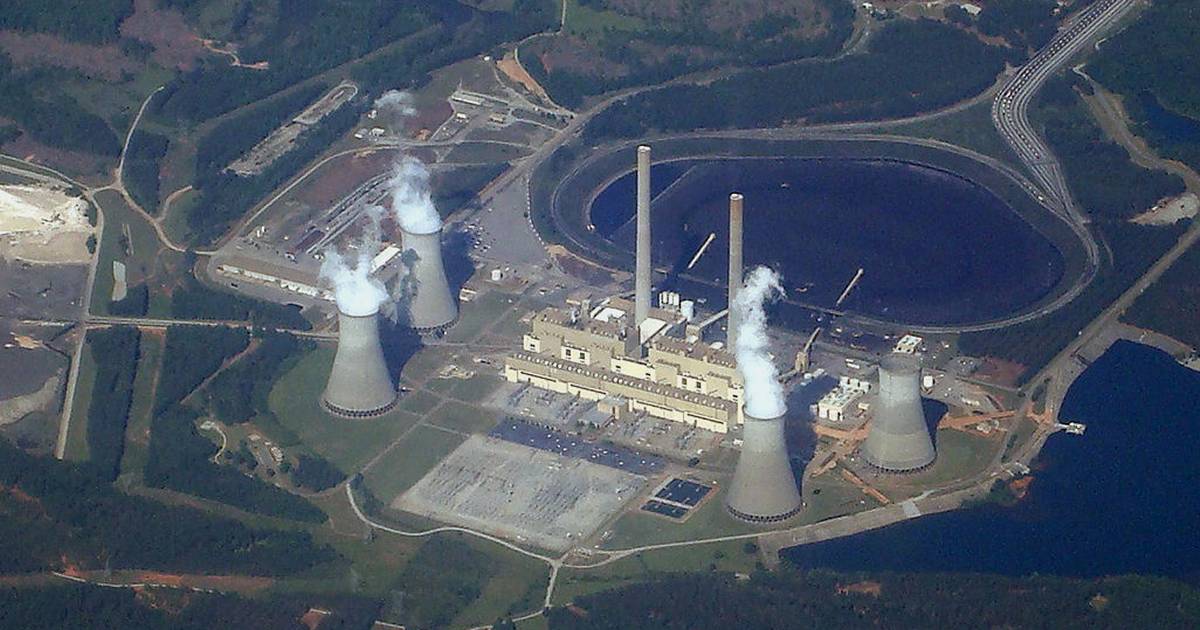
It once had the dubious distinction of co-operating the largest single point of carbon emissions in the USA, but Georgia Power now wants out of coal power altogether.
Georgia Power is a gentailer (electricity generator and retailer) and subsidiary of Southern Company, which is one of the USA’s largest generators of electricity. As at the end of 2020, Georgia Power had 14.4 GW of generation capacity and served 2,635,402 customers. At that point, the company had 4.8GW of coal power capacity.
The utility announced early this week that as coal-fired electricity generation is continuing to be less economically viable, it wants to shutter most of the coal units it controls by 2028, with the exception of two that will cease operations in 2035.
The amount of coal power to be retired by 2028 adds up to more than 3,500 megawatts according to the 2022 Integrated Resource Plan (IRP) recently filed with a state regulator.
While the transition will mean certifying an additional 2,356 megawatts of gas power, the utility will also boost its renewable energy capacity.
Georgia Power already has renewables in its stable – mainly hydro, but also more than a dozen solar farms. Renewable capacity would be lifted with the addition of 6,000 MW capacity by 2035, bringing the total in its portfolio to 11,500 MW by that year. The company is also looking to own and operate 1,000 MW of energy storage by 2030, which includes the 265-MW McGrau Ford Battery Facility.
“At Georgia Power, we know that to continue to meet the changing needs of our customers we must prepare now to build the electric system and energy infrastructure of the future,” said Chris Womack, chairman, president and CEO of the company.
Before Georgia Power can proceed with its plan, it will need the blessing of the Georgia Public Service Commission.
Georgia Power And Plant Scherer
The company is among the multiple owners and operators of Robert W. Scherer Power Plant – aka “Plant Scherer” – in Monroe County, which began commercial operation in 1982. This is a massive emissions-spewing monster that at its peak consisted of 4 operational units with a collective rated capacity of 3.78GW. Australia’s largest operating coal burner is Eraring in New South Wales, with a maximum capacity of 2.88GW.
In the early 2000’s, Plant Scherer was reportedly the largest single point of carbon emissions in the USA and ranked 20th in the world in terms of power plant carbon dioxide emissions. According to the US EPA, Plant Scherer was responsible for 6,862,268 tonnes of CO2e in 2020.
Georgia Power announced in November last year the unit it owns, Unit 3, would close by 2025.
The USA’s largest electricity gentailer, Florida Power & Light (FPL), closed down its last coal fired power stations in Florida last year. FPL is also a co-owner in Scherer, and shuttered Unit 4 on January 1 this year. As far as I’m aware, that marked the end of coal power for FPL.
On a related note, FPL is also big on renewables and in December unveiled what the gentailer claimed was world’s largest operational battery system charged with solar energy.

 RSS - Posts
RSS - Posts



For comparison purposes this may be of interest: https://www.georgiapower.com/company/about-us/facts-and-financials.html
Coal currently comprises 33.56% of Georgia Power’s capacity but is 164.8% the average fuel cost per kWh.
Oil and gas plants comprise 43.69% of Georgia Power’s capacity but are 111.7% the average fuel cost per kWh.
Nuclear currently comprises only 13.6% of Georgia Power’s capacity and is only 40.1% the average fuel cost per kWh.
Georgia Power also has Hydro generation – 7.6%, as well as a tiny proportion of Renewables – 1.5%.
My initial thought was that the move could be political – Atlanta voted Democrat, the rest of Georgia Republican, which loosely follows the pro- and anti-coal divide, but clearly the current cost of coal is going to be a consideration.
There’s also the fact that Georgia Power is bringing on 2 more nuclear generating units – one Q3 this year, and a second Q2 next year which will provide roughly 2,200 MW of capacity. These are the first new units in America for 30 years! While these won’t fully replace the coal capacity being lost, those plants aren’t being shut for another 6 years, and solar or wind options could perhaps make up the shortfall, assuming there is any. If I’m interpreting the data correctly, Nuclear and Renewable (sans Hydro) contributed far more than their share of the generated energy, Hydro about two-thirds its capacity, and Coal only about a third so perhaps Coal is now largely excess to requirements?.
Certainly an interesting change, but perhaps not as monumental as it first appears?